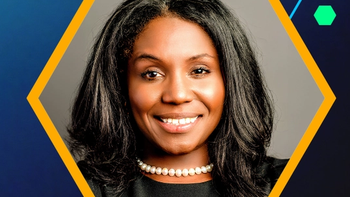
- Pharmaceutical Executive: July 2023
- Volume 43
- Issue 7
DE&I in Pharma: A Shared Aim Promoting Inclusivity from Non-Leadership Roles
In today's changing workplace environment—one forever altered by the pandemic and the new approaches it spawned—employees at all levels play a vital role in developing and advancing inclusive behaviors across an organization and beyond.
There is a lot of talk about diversity, equity, and inclusion (DE&I) in the life sciences industry. Pharmaceutical companies are rethinking the way they hire and promote employees while also examining the ways they interact with patient populations.
While a lot of progress has been made, DE&I doesn’t necessarily have a finish line. Instead, it’s a continuous process that needs to be regularly reviewed and adjusted to ensure that organizations are accurately fulfilling the needs of their employees and patient populations.
The work this entails, however, isn’t always obvious. It can sometimes feel like it’s an exercise that relies entirely on the actions of upper management and the members of the C-suite. That doesn’t have to be the only blueprint. When DE&I is approached from the right perspective, every employee at a company can be empowered to promote and improve it.
Pharmaceutical Executive® spoke with Celeste Warren, vice president for Merck & Co. and lead of the company’s Global Diversity & Inclusion Center of Excellence. She has worked in the role for nine years, which provides her with a unique perspective. Warren already had several years of experience when the COVID-19 pandemic struck and forced everyone in the industry to reexamine the ways nearly everything is done.
“The status of DE&I within the pharma industry is at a place where we’re looking at it and taking it further than workforce representation,” says Warren. “It’s going beyond what percentage of different employee identities exist within the industry and companies; and now, we’re looking at it from the standpoint of how we can bridge the gap between our industry and patients in underserved, undeveloped, [and] underfunded communities. The work that we’ve been doing [at Merck] in getting diverse patients into clinical trials is an example of the work that’s being done in health equity across different companies that has really evolved, especially over the last three years. For some companies, it’s been an integral part of the makeup of the organization and what it's doing on an ongoing basis.”
Warren adds that the industry is developing a better understanding of the importance of DE&I and how it can be implemented throughout the entire lifeline of the company—from drug development to manufacturing, shipping, and selling pharmaceuticals. According to Warren, this means that people working within the industry need to start thinking about their functions and responsibilities in different and evolving ways.
Beyond just having a diverse workforce, Warren stresses that it’s important for companies to create a culture of inclusion. To achieve this, an organization's leadership, of course, must be involved. However, employees in non-leadership roles still have a critical part to play.
“It’s important that those individuals [who] are not people leaders or managers in their respective organizations understand the powerful role they play in driving the culture they want to see,” says Warren. “When you think about an organization, you think about it from a pyramid-type structure. You have one CEO, a certain finite number of leaders, [and] a certain number of managers; so, probably only about 30–35% of your employee-base is comprised of managers and leaders. The rest of the 65-70% or so are employees who don’t manage people, but they do have a span of influence with peers, which enables them to make an impact. They can be leaders among their peers. So, they have a very important role.
"If we’re depending on just the top of the house and the leaders and people managers to drive DE&I, they do play a critical role, but we won’t succeed unless every individual understands the role they play in creating that inclusive environment.”
Taking action
Employees have a lot of opportunities to take positive action. For example, Warren notes that when workers are part of a group or team and are meeting for a project or assignment, they can practice strong DE&I values during these meetings. They can ask themselves certain questions, such as whether or not they are demonstrating inclusive behaviors. Are they allowing any unconscious biases to impact their interactions with coworkers, especially those that identify differently? All employees should be examining their skills, competencies, and biases through self-reflection. Warren explains that, ultimately, it’s up to the individual employees to meet with trusted colleagues and have these conversations.
When it comes to creating an inclusive culture, the environment of the company plays a large role as well and can impact the ways that employees interact with their direct teammates, extended team members, and the company as a whole. Workers should be familiar with the company’s corporate responsibility report, which should have a section on DE&I. They can then be better able to determine if they’re experiencing the goals outlined within that section.
“Workers can look at internal people policies, practices, and procedures and see what policies they have,” says Warren. “Is there a workforce flexibility process, a maternal and paternal policy, a transgender policy, harassment, discrimination, and anti-bullying policies? What are the different flexible work arrangements that exist? Do you have an accommodation policy? Looking at all those different things can show what kind of environment workers are in. Once they’ve done this inventory of their organization, they can check to see what managerial makeup looks like compared to the workforce. Are they transparent about it? If not, find out why. Then they can take action.”
A different type of leader
Warren stresses that one of the most powerful things a professional can do in the workplace is to elevate their voice and make their wishes known. Everyone should feel comfortable asking questions in a variety of settings. Also, workers should be able to take whatever questions they have to whatever leaders are available to them, whether it’s an HR representative, managers, or diversity leaders.
“They can try to start employee resource groups and be a leader from that perspective,” explains Warren. “Everyone has a span of influence with their peers that they may not realize or understand the power of. People can also ask their manager to be able to facilitate a conversation about DE&I at one of the staff meetings and talk about why it’s important. Those are things workers can do to be a part of their departments’ area or division within the company.”
Another factor that can impact a workplace’s culture is the external environment. This is one area where Warren says she’s witnessed a significant amount of change. When she first started working in corporate America, there was an unwritten rule that people didn’t talk about certain topics at work. This included politics, religion, and controversial news stories.
These days, however, she notices a change in that dynamic. Employees are no longer afraid to discuss these topics at work. In fact, some may even find it hard to believe that these points of conversation were once considered completely off-limits in the office.
“It’s no longer okay to siphon off part of someone’s identity,” says Warren. “We’re all going through things in our communities that impact us, our families, our communities, friends, colleagues, who either identify similarly to us or who we empathize with. All of us identify in some way that connects us with what’s happening externally. When we come into a workplace, the ways that we identify aren’t just washed away. Life doesn’t work that way. We bring the essence of who we are and what we’re facing in our communities into the workplace, and it manifests itself in many different ways, such as stress [and poor] mental health, and [it] makes it hard to be able to focus and concentrate at work, depending on how egregious and strong those issues are.”
Instead of trying to ignore external factors, Warren stresses that workplaces should understand that negative events in employees' communities will impact them. This provides an opportunity for leaders, whether they are managers or just coworkers that others look up to, the chance to demonstrate inclusive leadership behavior. Doing so effectively involves active and empathetic listening and reminding workers that it’s okay to utilize open-door policies.
Certain broader outside issues in society and the world will naturally impact workers. As such, it’s important for leaders to allow appropriate conversations about these types of events to be part of a healthy workplace environment. Allowing employees to talk through these issues will help them feel valued and provide a sense of belonging and psychological safety—along with making them more productive.
“When something happens, leaders should be reaching out to colleagues from impacted communities and asking [if] they’re okay and finding out how they can help in any way,” says Warren. “It’s important for leaders to let employees know that they’re thinking about them during these times and recognizing that it might be a hard time and letting them know that leadership is there if they need someone to talk to. It’s as simple as just reaching out. It meant a lot when people did that to me.”
COVID's impact on DE&I
As mentioned, the pandemic was a major external event that impacted the workplace significantly. Companies were forced to temporarily close offices, workers were shuttered in place, and all employees had to learn to be flexible, agile, and adaptable, especially when it came to the needs of other workers.
While this time was difficult for everyone, Warren believes that it ultimately had a positive impact on DE&I. Leaders across companies had to adjust the types of leaders they were, and this often resulted in them becoming more aware of their workers’ needs.
“There was a huge need for the enhanced development of inclusive leadership behaviors—being able to enhance these connections with employees through virtual means," says Warren. "We didn’t have the luxury of seeing them face to face and having coffee or tea before the day starts, or lunch, or face-to-face meetings and being able to read people at the same time in the room and connect in these obvious ways. It was much more challenging, but the need of the employee was amplified.”
As everyone’s working conditions changed, employees had to learn and develop new ways to manage their relationships with coworkers and the company as a whole. Hence, many employees took a crash course in inclusive behaviors, communicating with a virtual workforce, and how to maintain connections without having face-to-face conversations.
The new model
As today's workplace starts to settle into its new normal, many employees are finding themselves operating in a variety of different environments. Some have returned to the physical office full-time while others have a hybrid schedule. There are many employees who are still working fully remote. Regardless, the skills that employees developed during the pandemic will remain valuable.
“DE&I was enhanced from the standpoint of the manager-employee relationship,” says Warren. “It was enhanced from an inclusion standpoint and also shined a light on the inequities that existed in our patient base. In the pharmaceutical industry, many of us knew those inequities existed, but it amplified the need for solutions and interventions that needed to be [woven] into marketing strategies more purposefully.”
These lessons learned during the pandemic have helped fuel continued change across the pharma industry. While it’s important for the C-suite and management to instill DE&I as a company value, it’s equally crucial for all levels to participate. Each employee in a company has the ability to impact the experiences that their coworkers have. When DE&I is a collaborative effort, workers have a hand in creating an inclusive environment for everyone and holding company leadership to account to ensure that DE&I continues to improve.
For the pharma industry, DE&I reaches beyond its own workforce. With companies, themselves, becoming more diverse, an increasing number of voices have pointed out that pharma also has a diverse patient population to serve. As more workers become involved in both aspects, the greater the potential for organizations to build on their DE&I mandates internally and externally.
Articles in this issue
over 2 years ago
Crossing the Brain Barrierover 2 years ago
Biotech’s Survival Story: Companies Bear Down for Lean Yearsover 2 years ago
Harnessing AI for Pharma Salesover 2 years ago
Tapping New and Improved Drug Innovations in Asiaover 2 years ago
Drug Shortages Continue to Plague FDA, Manufacturersover 2 years ago
Contrasting Aims Highlight Pharma Reform Pursuitsover 2 years ago
Shifting Macro Trends Offer Hope for Biotech Performance Boostover 2 years ago
Navigating the Recession and Patent ExpirationsNewsletter
Lead with insight with the Pharmaceutical Executive newsletter, featuring strategic analysis, leadership trends, and market intelligence for biopharma decision-makers.




